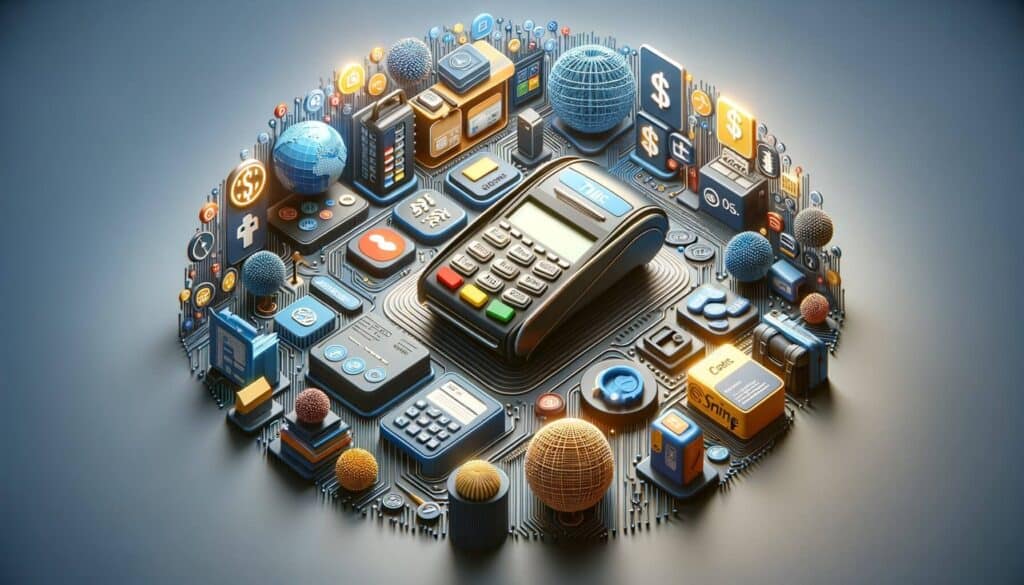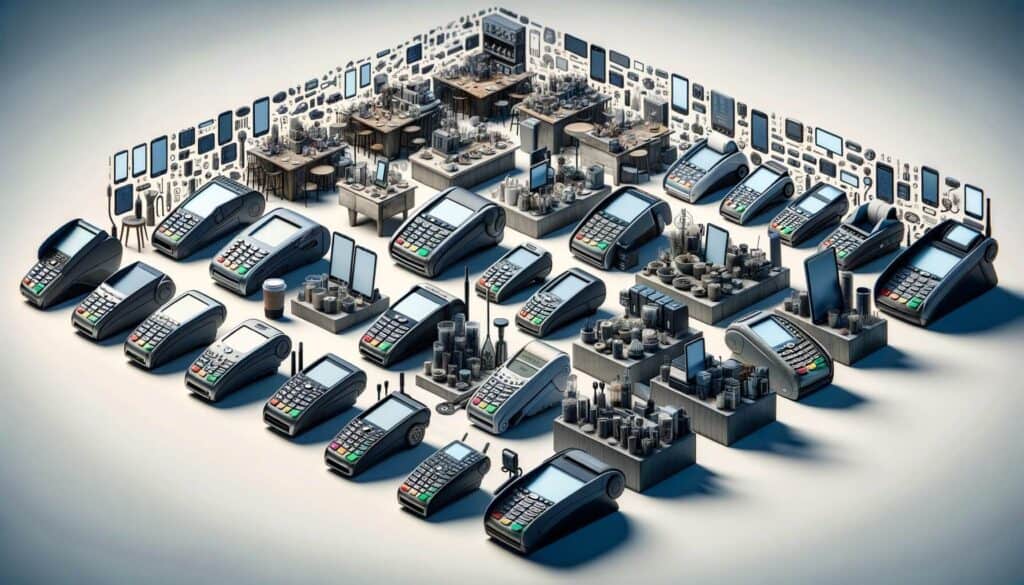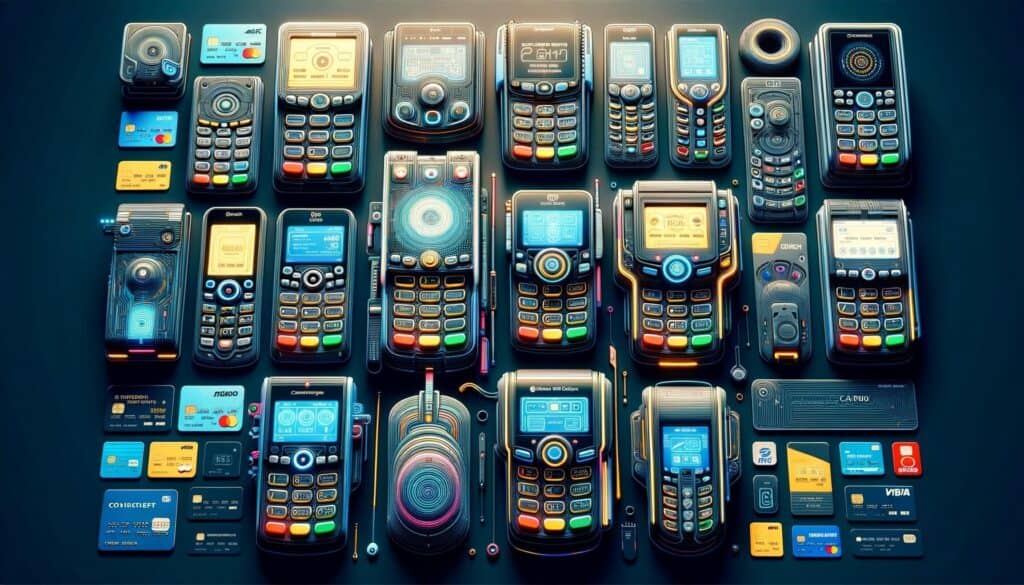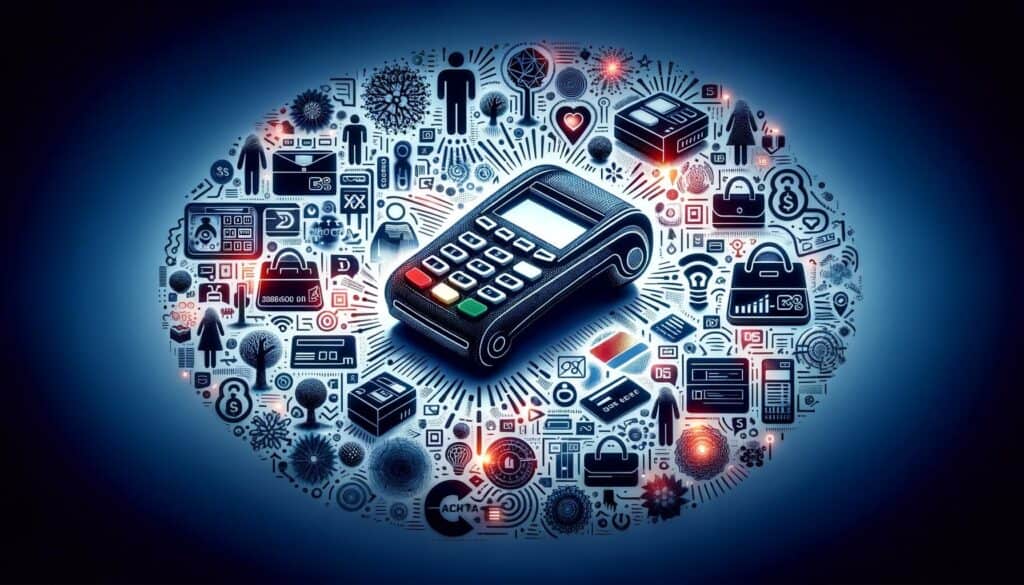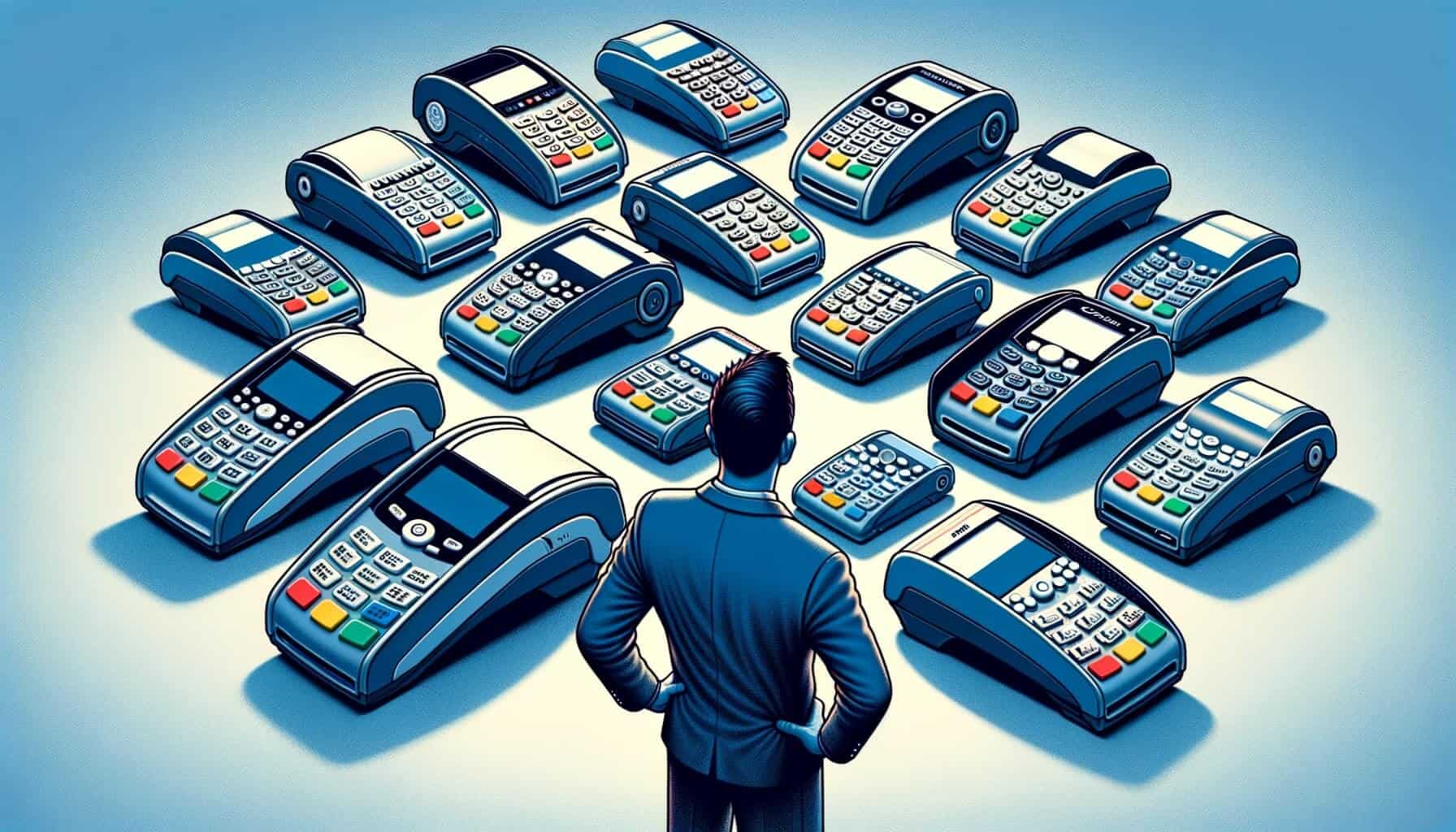
By American April 3, 2025
In today’s digital age, accepting credit card payments is essential for businesses of all sizes. To facilitate these transactions, businesses need a reliable and efficient credit card terminal. However, with a wide range of options available in the market, finding the right credit card terminal can be a daunting task. This comprehensive guide aims to help business owners navigate through the process of selecting the perfect credit card terminal for their specific needs.
Factors to Consider When Selecting a Credit Card Terminal for Your Business
1. Business Type and Size: The first step in choosing the right credit card terminal is to consider your business type and size. Different terminals cater to different industries and transaction volumes. For example, a small retail store may require a basic countertop terminal, while a restaurant might benefit from a wireless terminal for tableside payments.
2. Connectivity Options: Credit card terminals can be connected via various methods, including phone lines, internet connections, or wireless networks. Consider the availability and reliability of these options in your business location. For instance, if you have a stable internet connection, an IP-based terminal might be the most suitable choice.
3. Payment Types: Determine the types of payments you want to accept. While all credit card terminals can process major credit and debit cards, some may also support contactless payments, mobile wallets, or even gift cards. Assess your customers’ preferences and the trends in your industry to ensure you can accommodate a wide range of payment options.
4. Security Features: Protecting your customers’ sensitive payment information is crucial. Look for credit card terminals that comply with the Payment Card Industry Data Security Standard (PCI DSS). Additionally, consider features like encryption, tokenization, and EMV chip card acceptance to enhance security and reduce the risk of fraud.
5. Cost and Pricing Structure: Evaluate the upfront costs, ongoing fees, and pricing structure associated with different credit card terminals. Some providers may charge a monthly rental fee, while others offer terminals for purchase. Compare transaction fees, statement fees, and any other charges to find the most cost-effective solution for your business.
Types of Credit Card Terminals: A Comprehensive Overview
1. Countertop Terminals: These are the most common type of credit card terminals, typically found in retail stores and small businesses. They are connected to a phone line or internet connection and allow customers to swipe, dip, or tap their cards for payment.
2. Wireless Terminals: Ideal for businesses that require mobility, wireless terminals use cellular networks to process payments. They are commonly used in restaurants, food trucks, and delivery services, enabling transactions to be completed anywhere within the network coverage area.
3. Mobile Card Readers: These compact devices can be attached to smartphones or tablets, turning them into portable credit card terminals. Mobile card readers are popular among small businesses, independent contractors, and vendors who need to accept payments on the go.
4. Virtual Terminals: Virtual terminals are software-based solutions that allow businesses to process credit card payments through a web browser. They are particularly useful for e-commerce businesses or those that receive payments over the phone.
Evaluating the Features and Functionality of Credit Card Terminals
1. Card Acceptance: Ensure that the credit card terminal you choose can accept all major credit and debit cards. Additionally, consider whether it supports contactless payments, mobile wallets, and alternative payment methods like Apple Pay or Google Pay.
2. Display and Keypad: Look for a credit card terminal with a user-friendly interface, clear display, and responsive keypad. A backlit display can be beneficial in low-light environments, while a touchscreen interface may offer more flexibility and ease of use.
3. Receipt Options: Determine whether you need a credit card terminal that can print paper receipts or if digital receipts via email or SMS are sufficient. Some terminals offer both options, allowing you to cater to your customers’ preferences.
4. Integration with POS Systems: If you already have a point-of-sale (POS) system in place, ensure that the credit card terminal is compatible and can seamlessly integrate with it. This integration can streamline operations and simplify the reconciliation process.
5. Reporting and Analytics: Consider whether the credit card terminal provides detailed reporting and analytics features. These can help you track sales, identify trends, and make informed business decisions.
Choosing the Right Credit Card Terminal Provider: Key Considerations
1. Reputation and Reliability: Research the reputation and reliability of credit card terminal providers. Look for established companies with a track record of excellent customer service and reliable hardware. Reading customer reviews and seeking recommendations from other business owners can be helpful in this regard.
2. Customer Support: Consider the level of customer support offered by the provider. Ensure that they offer 24/7 technical support and have a responsive customer service team to assist you in case of any issues or questions.
3. Contract Terms and Flexibility: Review the contract terms and conditions, including the length of the agreement, cancellation fees, and any hidden charges. Opt for a provider that offers flexibility and does not lock you into a long-term contract.
4. Scalability: If you anticipate business growth in the future, choose a credit card terminal provider that can accommodate your expanding needs. Ensure that they offer scalable solutions and can easily upgrade your terminal or add additional devices as required.
Setting Up and Installing Your Credit Card Terminal: A Step-by-Step Guide
1. Choose a Provider: Select a credit card terminal provider that meets your requirements and budget. Consider the factors discussed earlier, such as business type, connectivity options, and security features.
2. Order the Terminal: Once you have chosen a provider, place an order for the credit card terminal. Provide the necessary information, such as your business details and payment preferences.
3. Receive and Unbox the Terminal: When the terminal arrives, carefully unbox it and ensure that all the components are included. Read the user manual and familiarize yourself with the terminal’s features and functionality.
4. Connect the Terminal: Depending on the type of terminal, connect it to the appropriate power source, phone line, internet connection, or wireless network. Follow the manufacturer’s instructions for proper installation.
5. Test the Terminal: Before accepting payments from customers, perform a test transaction to ensure that the terminal is functioning correctly. Verify that it can process payments, print receipts, and reconcile transactions accurately.
6. Train Staff: If you have employees who will be using the credit card terminal, provide them with training on how to operate it. Familiarize them with the different payment methods, troubleshooting procedures, and security protocols.
Understanding Payment Processing and Security with Credit Card Terminals
1. Payment Processing: When a customer makes a payment using a credit card terminal, the transaction goes through a payment processor. The processor verifies the card details, checks for available funds, and transfers the funds from the customer’s account to the merchant’s account.
2. Payment Gateway: In online transactions, a payment gateway acts as the virtual credit card terminal. It securely captures the customer’s payment information, encrypts it, and sends it to the payment processor for authorization.
3. Payment Security: Credit card terminals employ various security measures to protect sensitive payment information. These include encryption, tokenization, and EMV chip card acceptance. Encryption ensures that data is transmitted securely, while tokenization replaces card data with unique tokens to prevent unauthorized access. EMV chip card acceptance adds an extra layer of security by validating the card’s authenticity.
4. PCI DSS Compliance: The Payment Card Industry Data Security Standard (PCI DSS) is a set of security standards that businesses must adhere to when processing credit card payments. Ensure that your credit card terminal and payment processing system are PCI DSS compliant to protect your customers’ data and avoid penalties.
Troubleshooting Common Issues with Credit Card Terminals: A Handy Guide
1. Terminal Not Powering On: Check the power source and connections to ensure they are secure. If the terminal still does not power on, try resetting it or contacting technical support for assistance.
2. Connection Issues: If the terminal is not connecting to the internet or phone line, verify that the cables are properly connected and that the network or phone service is functioning correctly. Restarting the terminal or contacting your service provider may help resolve the issue.
3. Card Reading Errors: If the terminal is having trouble reading cards, ensure that the card is inserted or swiped correctly. Clean the card reader with a soft cloth to remove any dirt or debris that may be obstructing the reading process.
4. Printing Problems: If the terminal is not printing receipts or the print quality is poor, check the paper roll to ensure it is properly loaded. Clean the print head if necessary and replace the paper roll if it is empty or damaged.
5. Error Messages: Error messages on the terminal’s display can indicate various issues. Consult the user manual or contact technical support for guidance on troubleshooting specific error codes.
Frequently Asked Questions (FAQs) about Credit Card Terminals
Q1. What is the difference between a credit card terminal and a payment gateway?
Answer: A credit card terminal is a physical device used to process payments in-person, while a payment gateway is a software-based solution that facilitates online transactions.
Q2. Can I use my existing credit card terminal with a new provider?
Answer: In some cases, you may be able to reprogram your existing credit card terminal to work with a new provider. However, compatibility depends on the terminal’s make and model and the new provider’s system requirements.
Q3. How long does it take to set up a credit card terminal?
Answer: The setup time can vary depending on the provider and the complexity of your requirements. In general, it can take anywhere from a few minutes to a few days to set up and activate a credit card terminal.
Q4. What should I do if my credit card terminal is stolen or lost?
Answer: Contact your credit card terminal provider immediately to report the incident. They can deactivate the terminal and assist you in securing your account and preventing unauthorized transactions.
Q5. Can I accept payments without a physical credit card terminal?
Answer: Yes, there are alternative methods for accepting payments, such as mobile card readers that can be attached to smartphones or tablets, or virtual terminals that process payments through a web browser.
Conclusion
Choosing the right credit card terminal is crucial for businesses looking to accept credit card payments efficiently and securely. By considering factors such as business type, connectivity options, security features, and cost, business owners can make an informed decision.
Additionally, understanding the different types of credit card terminals, evaluating their features and functionality, and selecting a reputable provider are essential steps in the process. With proper setup, installation, and troubleshooting knowledge, businesses can ensure smooth payment processing and provide a seamless experience for their customers.

